The Coronavirus, unrest in the Middle East, the impeachment process, and the presidential election later this year all have had or can have an effect on the markets and people’s confidence in the new year. From everything I’ve heard, the economy still continues trending up, albeit at a bit of a slower pace for 2020 Read more
HVAC

The Coronavirus, unrest in the Middle East, the impeachment process, and the presidential election later this year all have had or can have an effect on the markets and people’s confidence in the new year. From everything I’ve heard, the economy still continues trending up, albeit at a bit of a slower pace for 2020.
“With the exception of the unknowable effects from election events, we see continued moderate GDP growth with very little likelihood of recession in the near term. From a macro-economic perspective, we see 2020 will be much like 2019, but with the implementation of the United States-Mexico-Canada Agreement (USMCA) and the de-escalation of the trade war with China, we anticipate less uncertainty and less volatility,” says Bruce Carnevale, President & CEO, Bradford White Corporation.
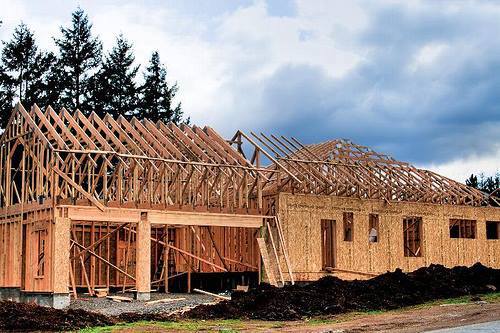
According to the National Association of Homebuilders (NAHB), although the economy is slowing slightly, the risk of a recession is low and remodeling should keep pace with inflation into 2021.
“On balance, we are optimistic, and 2020 being an election year historically supports that view. We expect to see moderate growth and opportunity overall,” says Bill Gray, president of Uponor North America.
At this point when the economy seems to be relatively healthy, you almost hate to bring up the “R” word, but Gray says that with commercial construction flat to slightly up currently, a looming recession depends on owner and builder confidence—with development times, size of commercial projects and long lead times to completion increase risk as we move into 2021 and beyond.
Residential is trending upward, says Gray, which is balanced by affordability and consumer debt issues. Commercial is at least holding its own or up slightly from one month to the next. “So confidence is good because of all the projects in the funnel. But if people start to see storm clouds, post-election, that confidence could weaken substantially and quickly, and 2021 could become a challenging year for our industry,” says Gray.
“But even so, we expect more of a correction than a sharp downturn. I state the above with the proviso that the emergence of coronavirus is a threat, with new information surfacing daily. We are a long way from knowing what the impact on 2020 and beyond will be,” continues Gray.

(PRNewsfoto/Fairmont Supply Company)
How does the upcoming presidential election affect the economy? “The lead up to the election might affect projects not yet funded, especially projects with government funding sources, but I don’t anticipate any effect on private sector projects—those might be influenced by the stock market and interest rates, both of which are currently favorable,” says Mark Evans, Sr. Director of North American Sales, Viega.
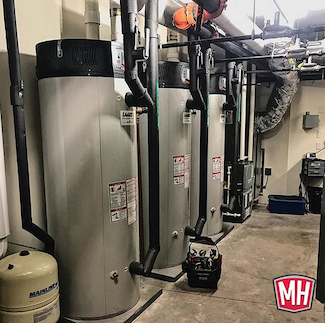 According to Carnevale, the economy so far seems to have shrugged off the partisan bickering in Washington. “Favorable tax policy had a positive impact on the overall business environment, but we believe that regulatory relief provided an even greater level of economic stimulation. Increases in business taxes or regulatory burden would have a negative impact on overall business performance, investment, and the economy in general.”
According to Carnevale, the economy so far seems to have shrugged off the partisan bickering in Washington. “Favorable tax policy had a positive impact on the overall business environment, but we believe that regulatory relief provided an even greater level of economic stimulation. Increases in business taxes or regulatory burden would have a negative impact on overall business performance, investment, and the economy in general.”
For some, naturally, the economy affects those differently in various segments of the country. For example, with a good balance of work across residential, healthcare and commercial sectors, J.C. Cannistraro, Watertown, Mass., sees moderate growth in the short term, “The construction market in Boston is still strong and there does not appear to be any slowdown in the next several years,” says Mark Perrone, purchasing manager, J.C. Cannistraro. “Interest rates are still relatively low, and I think if there is an increase, we could see a change in if/how projects are financed.”
Residential Remodeling
According to experts from the National Association of Homebuilders (NAHB) at this year’s International Builder’s Show (IBS), spending on residential improvements will continue to grow over the next two years at a gradual pace, citing increased consumer confidence and demand.
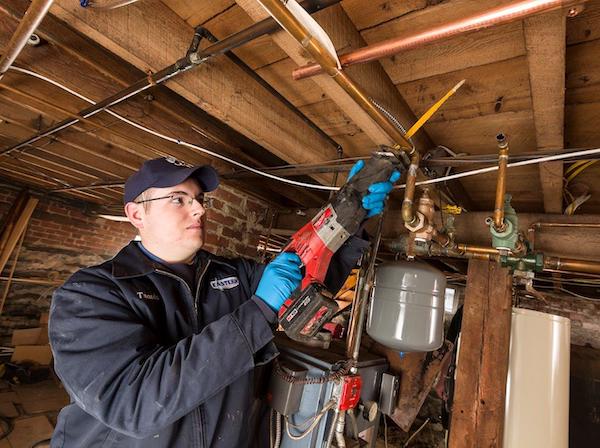
“NAHB estimates that real spending on home improvements will even out at a slower place of about -.6% in 2020 and an increase of 1.2% in 2020,” said Paul Emrath, Ph.D., NAHB’s assistant vice president for Surveys and Housing Policy Research. “The biggest factors prohibiting stronger growth is mainly the ongoing labor shortage.”
And that labor shortage is on the list of “things to keep an eye on” for Viega’s Evans, “Consumer debt is a concern, as is a shift in starts from single-family dwellings to multi-family construction, and a lack of skilled labor in some markets.”
Skilled Labor
The number one business challenge in our industry, says Carnevale, is still the lack of skilled labor. “The trades are ‘aging’ and the challenge of bringing young men and women into the trades continues. Many industry organizations are investing time and funding into workforce development and recruitment initiatives, but we still have a long way to go. This is a deeply embedded cultural challenge that will take a significant amount of time to address,” says Carnevale.
To emphasize this concern, according to Stephen E. Sandherr, Associated General Contractors of America (AGC)—in regard to findings detailed in the Strong Demand for Work Amid Stronger Demand for Workers: The 2020 Construction Hiring and Business Outlook Report, co-produced with Sage Construction and Real Estate, “Contractors are very optimistic about demand for construction in 2020,” said Stephen E. Sandherr. “At the same time, many construction executives are troubled by labor shortages and the impacts those shortages are having on operations, training and safety programs, and bottom lines.”
Adapt and Move Forward
One thing is for certain, the companies that can adapt to today’s issues will be at the forefront of today’s modern contracting. How can contractors ready themselves responsibly? Diversification and a focus on improving business processes and systems, says Evans.
Yet, the technology landscape in construction, and every industry for that matter, is constantly evolving. This can be overwhelming since there always seems to be a new software, AI or robot that can do it faster, cheaper and better. “I believe the companies that can embrace this and find the proper balance between people and technology will be the leaders in industry,” says Perrone.
Enhanced training capabilities—video, VR, etc.—remote diagnostic capabilities, which improve the efficiency and effectiveness of the contractor, and high efficiency products that can provide proactive replacement opportunities can all factor into business growth, says Carnevele. “Train with the goal to be the product experts in your trading area, and train to diversify into adjacent businesses which are of interest to and valued by your customers,” says Carnevale.
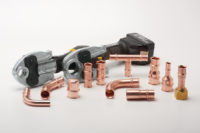
RLS is the manufacturer of the original, patented, proven press-to-connect fittings for high-pressure HVAC and refrigeration applications. These are the same reliable fittings that have been in widespread use – and fully registered and listed to UL207 for pressures up to 700 PSI – since 2015. Faster and Easier Using an RLS-approved battery-powered tool and Read more
RLS is the manufacturer of the original, patented, proven press-to-connect fittings for high-pressure HVAC and refrigeration applications. These are the same reliable fittings that have been in widespread use – and fully registered and listed to UL207 for pressures up to 700 PSI – since 2015.
Faster and Easier
Using an RLS-approved battery-powered tool and jaws, copper tube connections can be made in less than 10 seconds, resulting in jobs being completed up to 60% faster compared to conventional brazing. So RLS fittings help you get the job done sooner, get to the next job faster and get more jobs done. Plus, no brazing means no hauling brazing equipment and materials from jobsite to jobsite.
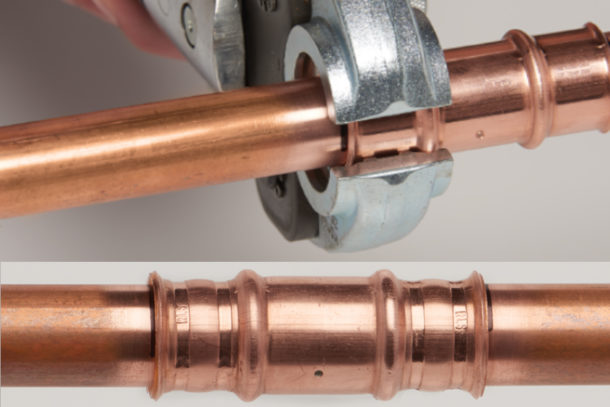
Safer
By eliminating the flame from the workplace, RLS press fittings create a safer work environment, removing all the dangers and precautions that come with brazing, as well as eliminating costs:
- No flammable gas
- No fire hazards
- No fire spotters
- No hot work permits
- No nitrogen purging
Reliable
The RLS patented design uses a double circular crimp that work hardens the copper to create a permanent mechanical joint that seals off the O-ring from outside air. The circular crimp also maintains the circular shape of the tube and results in a smooth ID. More than 8 million RLS fittings have been installed worldwide since 2015, so they have a proven track record of dependability. They are also backed by a 10-year limited warranty.
Full Product Line
RLS offers all the products you need to get the job done… couplings, tees, long-
radius elbows, reducers, caps and much more. Current sizes range from ¼” to 1-3/8”, with the “RLS XL” line of 1-5/8" and 2-1/8" press fittings coming later in 2020.
Check with your local distributor for RLS press fittings or visit
www.rapidlockingsystem.com for more information.

The importance of proper domestic hot water (DHW) temperature control in providing comfort, safety and convenience cannot be overstated. Delivering it remains one of the most important responsibilities of plumbing system designers. Kevin Freidt, Caleffi director of product management and technical support, will discuss temperature control at the hot water source, at the point-of-use, in the Read more
The importance of proper domestic hot water (DHW) temperature control in providing comfort, safety and convenience cannot be overstated. Delivering it remains one of the most important responsibilities of plumbing system designers. Kevin Freidt, Caleffi director of product management and technical support, will discuss temperature control at the hot water source, at the point-of-use, in the balanced secondary circuits and in the system as a whole.
You’ll learn:
→ What methods are used to control temperature at the DHW source?
→ What is different about controlling hot water temperature at the source vs. at the point-of-use?
→ Mixing valve standards ASSE 1017, ASSE 1070 and other related ASSE standards.
→ Can an instantaneous heater take the place of a mixing valve?
→ Are electronic mixing valves more accurate than thermostatic mixing valves?
→ How do I properly size and install a mixing valve to assure accuracy?
→ What are some causes of the loss of accuracy in a mixing valve?
→ What about temperature control and balancing of secondary piping circuits when I have recirculation?
→ What does accurate temperature control have to do with preventing Legionella bacteria issues?

Freidt is the intellect behind sizing up the best product offerings in a moving target market and manages an exceptional technical support team. He has a B.S. in Mechanical Engineering Technology, 35+ years’ of experience in the commercial HVAC industry and is a LEED AP. Our audience will thoroughly appreciate his academic passion and concise content delivery.
Coffee with Caleffi technical training webinars are free and intended for contractors, designers and wholesalers. By submitting your webinar registration, you are consenting to email communications to keep you up-to-date on industry news. A Certificate of Attendance is emailed to attendees following the webinar.
Missed a webinar? No problem, our webinar archive is available 24/7 for your convenience.
If you have questions on webinar content, please direct them to bob.rohr@caleffi.com.
Austin’s top plumbing company honored by the Austin Business Journal and The Austin Chronicle. Austin, Texas — Radiant Plumbing & Air Conditioning, Austin’s No. 1 plumbing and air conditioning home repair specialists, has been listed on the Austin Business Journal’s Fast 50 and named The Austin Chronicle’s Best of Austin for the HVAC and Plumbing Read more
Austin’s top plumbing company honored by the Austin Business Journal and The Austin Chronicle.
Austin, Texas — Radiant Plumbing & Air Conditioning, Austin’s No. 1 plumbing and air conditioning home repair specialists, has been listed on the Austin Business Journal’s Fast 50 and named The Austin Chronicle’s Best of Austin for the HVAC and Plumbing categories.
Radiant Plumbing ranked 21st in Austin’s Fast 50, presented by the Austin Business Journal. The Austin Fast 50 Awards recognizes Central Texas independent businesses for exceptional revenue growth over the three most recent fiscal years. Financial information is verified by a specified local accounting firm and companies must have generated a minimum of $500,000 in revenue in 2016 to be eligible for nomination. In 2016, Radiant Plumbing had an annual net revenue of $7.7 million. By 2018, Radiant Plumbing increased its net revenue to $13 million.
“We were competing against some great businesses this year,” said Brad Casebier, owner of Radiant Plumbing. “Austin is home to a lot of different industries, and we were the only home service company ranked in the Fast 50 Awards. This award is a testament to the hard work and dedication of everyone on the Radiant team. Our goal is to continue growing, and for that to happen, we need the best talent to join us in serving the Austin community.”
Radiant Plumbing was also awarded the Best of Austin in the HVAC and Plumbing categories for the second consecutive year. The Best of Austin awards began in 1990 as a collaborative effort between The Austin Chronicle’s audience members and the staff. Categories for these awards include arts and entertainment, nightlife, services, shopping and more. The Austin Chronicle has given over 300 awards to local businesses since 1990.
“Being named the Best of Austin in two categories is a great accomplishment for our team,” Casebier said. “The two awards go hand-in-hand. We’re delivering excellent service to the community, and we are receiving more business because of those efforts. Our team believes in our culture of excellence, and it’s represented by these awards from The Austin Chronicle and the Austin Business Journal.”
For more information about Radiant Plumbing or available positions, please visit https://info.radiantplumbing.com/careers.

Bosch Thermotechnology announced an expansion today to its connected thermostat portfolio with the new Bosch Connected Control BCC50 Wi-Fi Thermostat. The BCC50 is a Bosch connected thermostat that is affordable while still providing high-end features such as smart device compatibility, remote programming and easy integration with HVAC systems. The BCC50 offers a 2.8-inch color screen with five Read more
Bosch Thermotechnology announced an expansion today to its connected thermostat portfolio with the new Bosch Connected Control BCC50 Wi-Fi Thermostat. The BCC50 is a Bosch connected thermostat that is affordable while still providing high-end features such as smart device compatibility, remote programming and easy integration with HVAC systems.
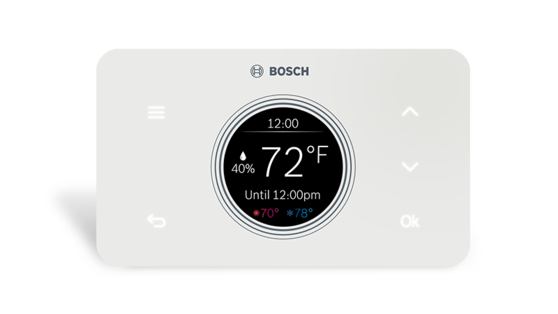
The BCC50 offers a 2.8-inch color screen with five illuminated touch buttons, a minimalistic design, and voice control via Amazon Alexa- or Google Assistant-enabled devices.
Users can integrate smart home apps with the BCC50 to remotely turn their thermostats on and off, change the temperature, and review current conditions and settings. Alexa or Google will recognize the device by its name, which users can customize in the Bosch Connected Control smartphone app.
They can also access intuitive functions such as app alerts, auto-on safety controls, and system air filter replacement reminders. Users can even set a schedule to ensure their Bosch Connected Control BCC50 meets specific heating and cooling needs.
The new smart device-compatible thermostat offers all the high-end bells and whistles at an affordable price point. Those features include:
- A 2.8-inch color screen with five illuminated touch buttons;
- Minimalistic, streamlined design aesthetics;
- Voice control via Amazon Alexa- or Google Assistant-enabled devices;
- Access and customization through the Bosch Connected Control app;
- An auto-on safety function;
- Scheduling abilities to meet specific heating/cooling needs;
- Regular maintenance air-filter change reminders; and more.
“Our goal with the BCC50 is to combine Bosch’s cutting-edge technology with an affordable price point,” said Joey Sung, senior project manager at Bosch Thermotechnology. “Users should not have to break the bank to enjoy comfort and quality.”
Whether through the app or device, itself, users can lock the thermostat to prohibit changes; manipulate temperature set points or modes; and monitor run times for the heating or cooling equipment, air filter, and water pad. HVAC professionals can leverage the advanced settings for better control and improved performance of the heating and cooling units and access to device logs.
